Set just behind Palladio’s striking Redentore church on Giudecca, this tranquil garden offers a unique mix of history, greenery, and waterfront charm. It recently opened to the public and is really worth a visit if you’re looking for a change from the palazzos or the crowds in Venice. There’s something refreshingly different about spending time here.
Wandering under the pergolas lush with seasonal blooms, passing olive trees and vegetable beds, is unexpectedly meditative. Palladio’s architectural legacy, the Capuchins’ quiet charity, and modern conservation make you feel part of a centuries-old cycle of care and gratitude.
A 500-year-old retreat for mind and body
The Capuchin friars settled at this site in the 1530s. They first established a small church and convent, Santa Maria degli Angeli, commissioned by the Friars Minor of San Francesco della Vigna. In 1577, after Venice suffered a devastating plague, they built the Church of the Holy Redeemer (Redentore) as an act of gratitude. The design of the church was entrusted to Andrea Palladio, one of the most influential architects in Venice. The adjacent garden played a vital role in the convent’s daily life, providing food for the friars and remedies for the sick. More information on the history of the church can be found in ‘Enjoy the Festa del Redentore with these insider tips’.
Like many monastic gardens, the garden followed a regular cross-shaped layout, with pergolas marking out spaces for different purposes. There was a flower garden to decorate the church altars, a kitchen garden to feed the friars and provide soup for the poor at the convent’s door, and a ‘giardino dei semplici’ with medicinal herbs used to make natural remedies. A small apiary ensured a steady supply of honey, while a central pond served both irrigation needs and spiritual symbolism.
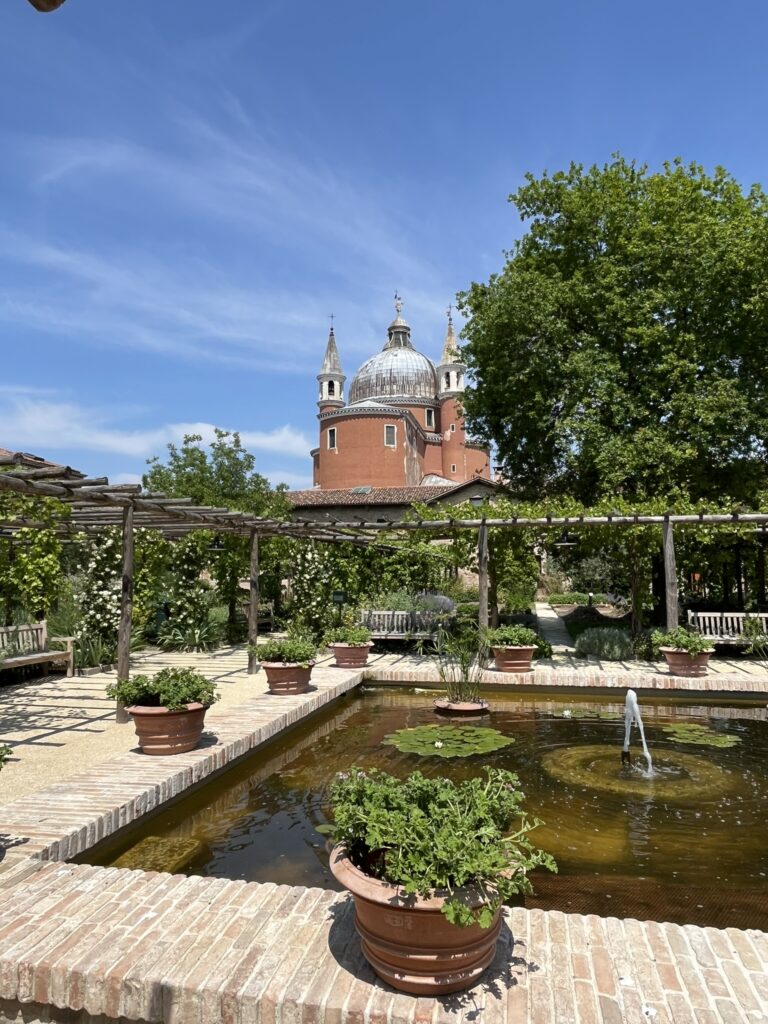
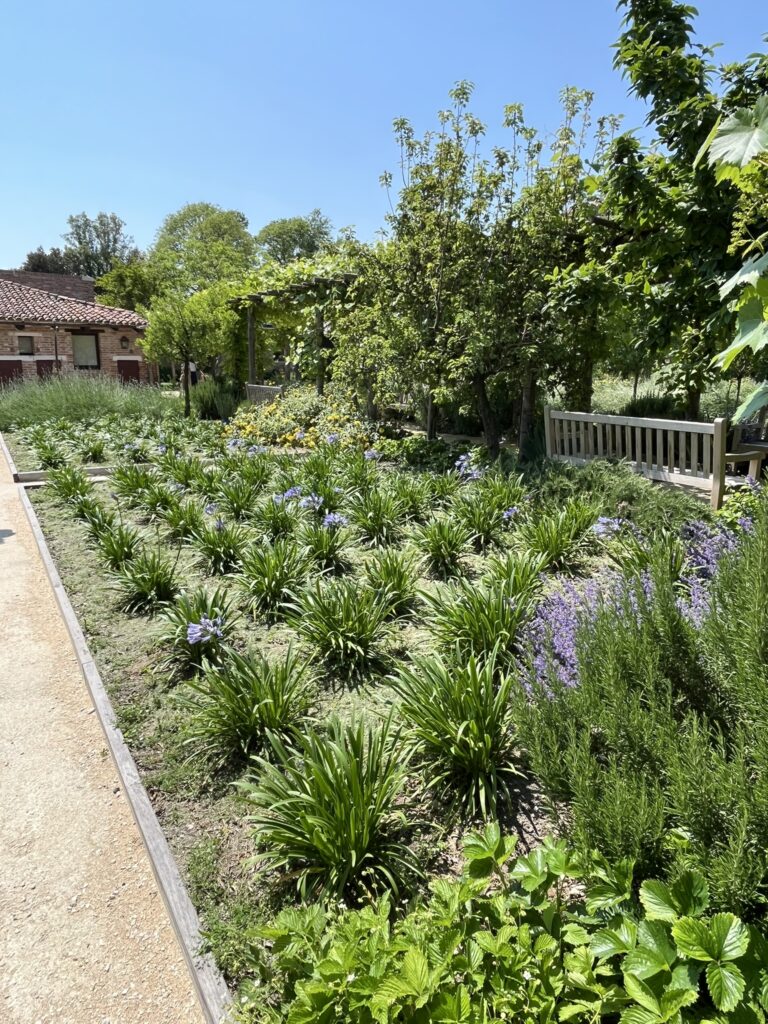
To the south of the garden are the old workshops, which once played a key role in the daily life of the convent: a carpentry shop, a blacksmith’s forge, a wool mill where habits were sewn, and spaces used to prepare mistrà, a liqueur mixed with water and served on the Day of the Redeemer. Adjacent to these workshops are the two chapels where the friars would retreat for meditation and quiet rest.
Behind the old workshops are two small gardens facing the lagoon, one planted with pittosporums, the other with olive trees.
For centuries, the garden remained a quiet sanctuary of contemplation, healing, and self-sufficiency, until time, neglect, and floodwaters slowly wore it down.
A thoughtful restoration
After the acqua granda in 2019, the convent garden was restored by the Venice Gardens Foundation, drawing on its experience at the Royal Gardens near San Marco. They carefully revived the garden’s cross-shaped layout with olive groves, fruit trees, artichokes and pumpkins, seasonal flowers (roses, lilies, jasmine, cyclamens), aromatic herbs, and the signature pond with lotuses.
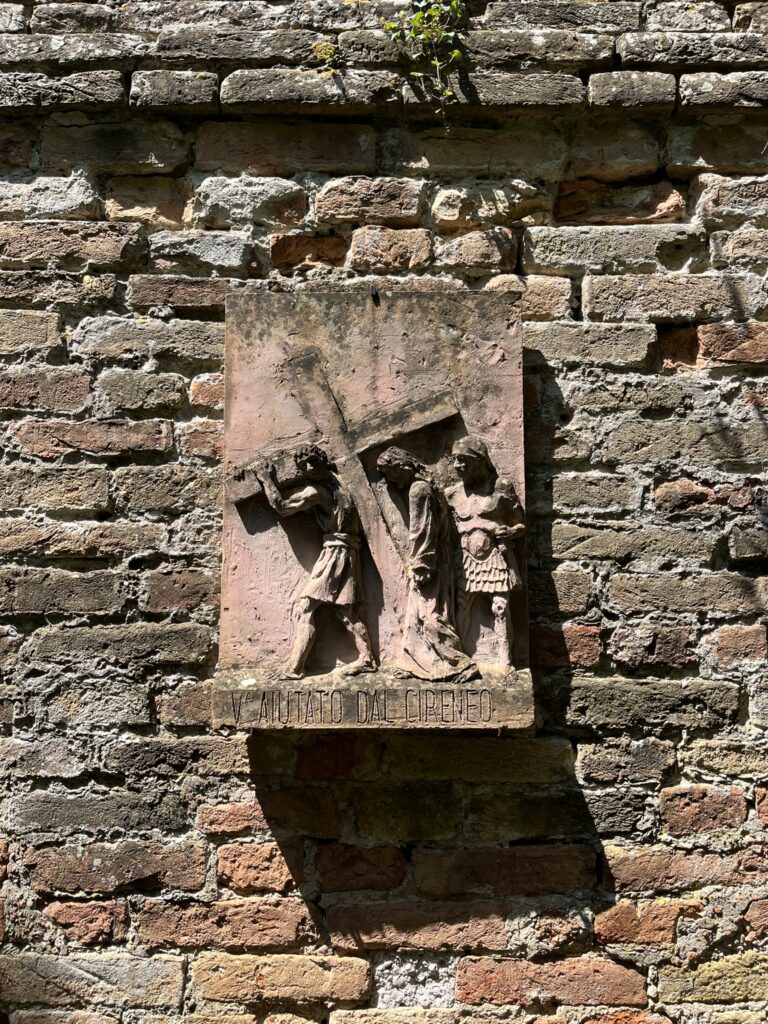
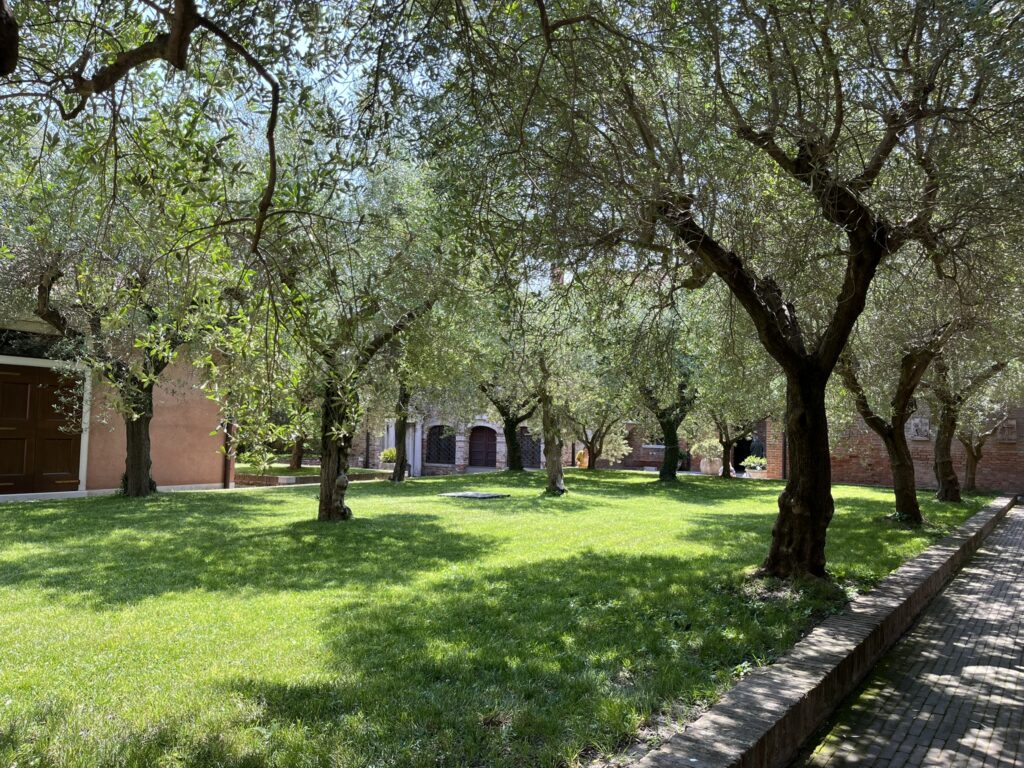
When you enter the monastery complex, the first courtyard immediately conveys a sense of a sheltered, secluded world of silence, tranquillity and sobriety. After you pass the small olive grove and step into the garden itself, you will be surprised by its scale, as it spans more than 2,000 m².
A colourful tapestry of herbs and vegetables fills every available space, blending scented Mediterranean species such as lavender, helichrysum, sage, iris and catmint with olive trees and artichoke plants. As in the historical garden, you’ll also find aromatic and medicinal species, such as mallow, flax, chamomile, artemisia, verbena and valerian, scattered among the vegetables. Along the southern wall of the convent, flowering plants once used to decorate church altars continue the tradition. Varieties of roses and lilies are interplanted with heirloom species such as zinnias, dahlias and asters.
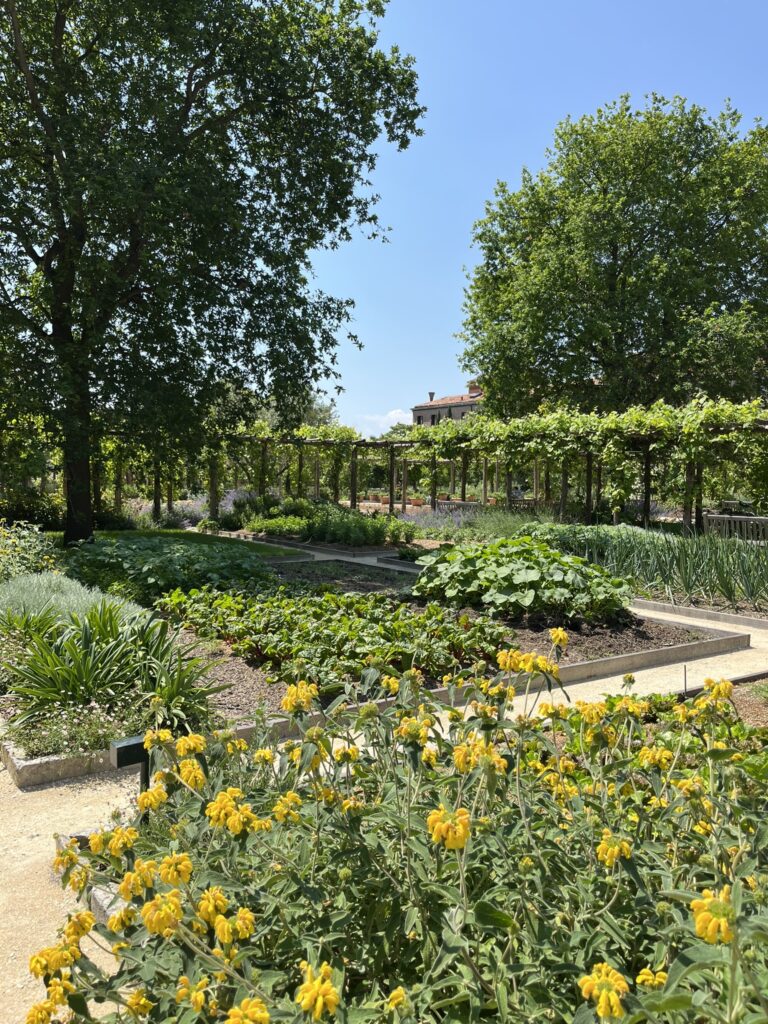
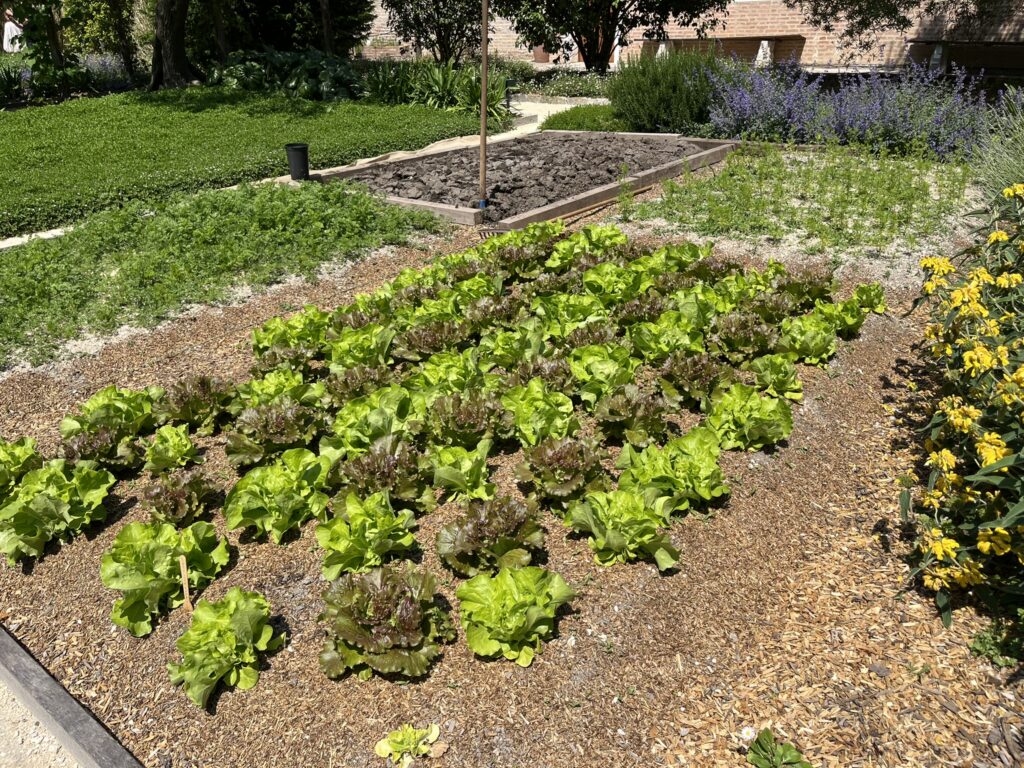
In the section closest to the lagoon, hellebores and cyclamens add splashes of colour among the low-growing plants. Towering cypresses, along with hydrangeas, gardenias and ferns, provide welcome shade during the summer months and help preserve the garden’s sheltered microclimate and quiet atmosphere.
The long main paths form a cross, shaded by pergolas draped in grapevines and climbing roses. Along the way, inviting benches offer quiet spots to rest, admire the rear view of the Redentore church, or simply enjoy the stillness. You can also sit on one of the benches overlooking the lagoon, or have a drink or light meal on the terrace of the bar.
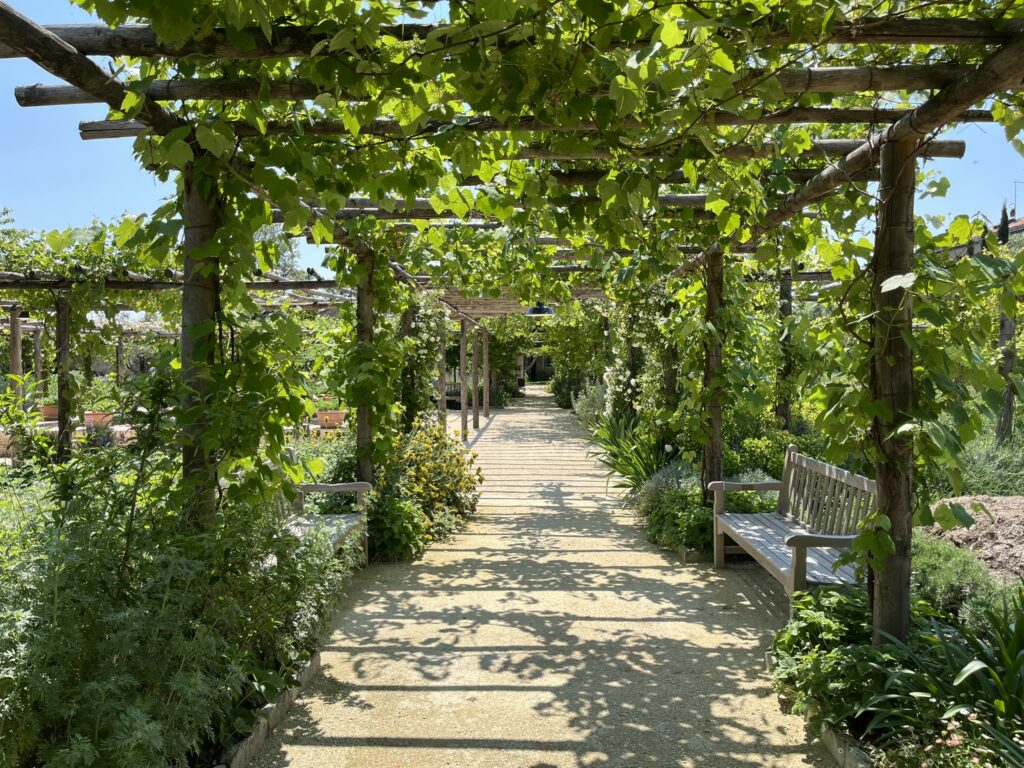
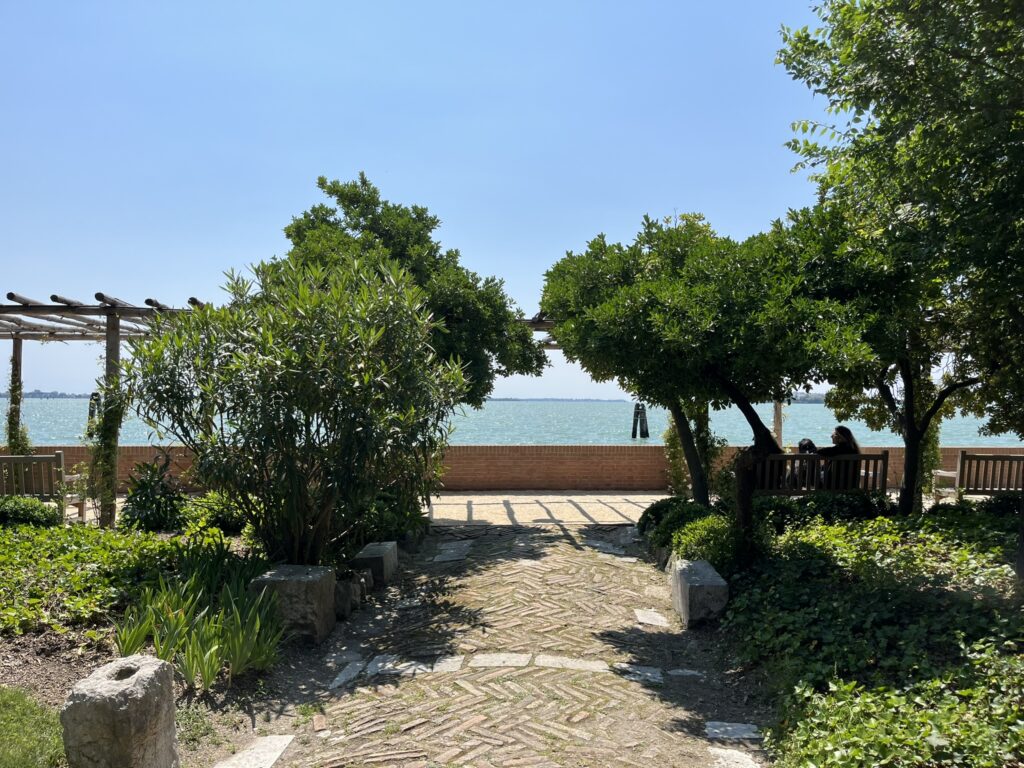
The restoration project extended beyond the garden to include the centuries-old buildings on the site. The former workshops will now host exhibitions in tune with the spirit of the garden and the natural world. An oil mill and a honey extraction room make it possible to produce and store products from the apiary, which has been rebuilt with natural hives. The small meditation chapel, decorated with reliefs of Saint Jerome, has returned to its original role as a haven of silence and peace. A traditional cavana (boathouse) and the greenhouse have also been restored. Rainwater collected from the roofs, along with a newly dug well, now ensures the garden’s water self-sufficiency.
Plan your visit to the Redentore garden
To visit the Redentore garden, take a vaporetto (line 2, 4.1 or 4.2) across the Giudecca canal and get off at the Giudecca Redentore stop. Walk down the small street to the left of the church until you reach the discreet gate at the very end. Once inside, the bustle of Venice melts away, and you’re free to relax and explore.
The garden is open on Thursdays, Fridays, and Saturdays, with opening hours varying by season:
– Summer (June 1 – September 20): 10 AM – 7 PM
– Autumn (September 21 – October 31): 10 AM – 5:30 PM
– Winter (November 1 – March 31): 10 AM – 4:30 PM
– Spring (April 1 – May 31): 10 AM – 5:30 PM
Tickets cost 12 euros per person (6 euros for residents and children) and can be purchased at the entrance.
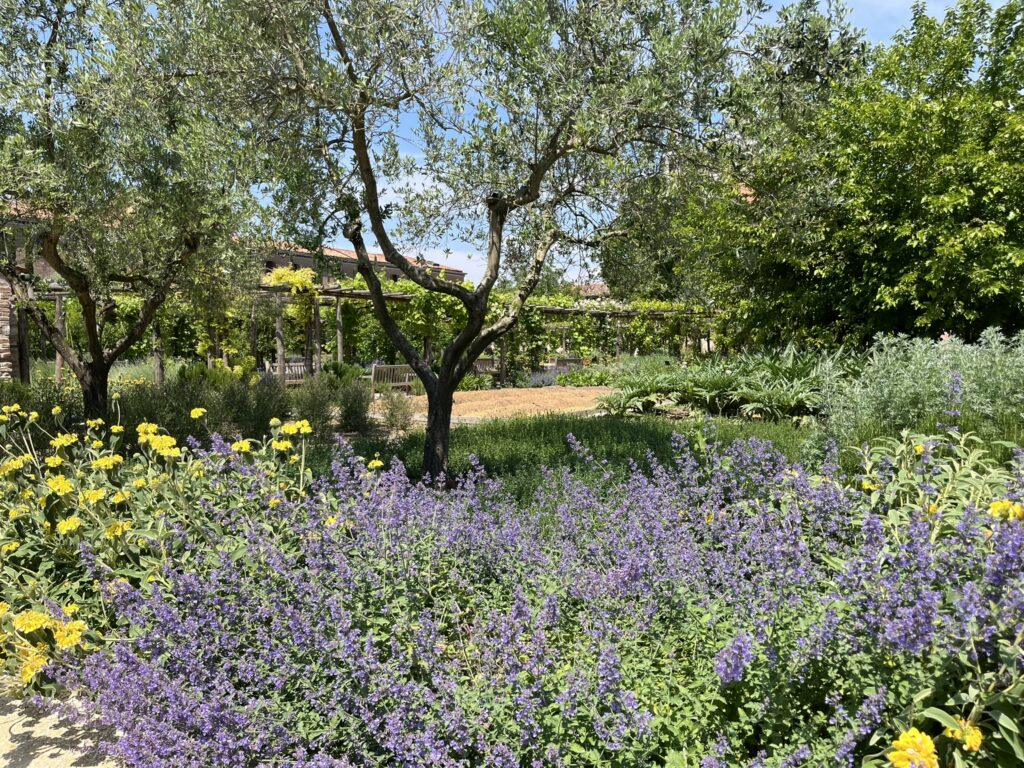
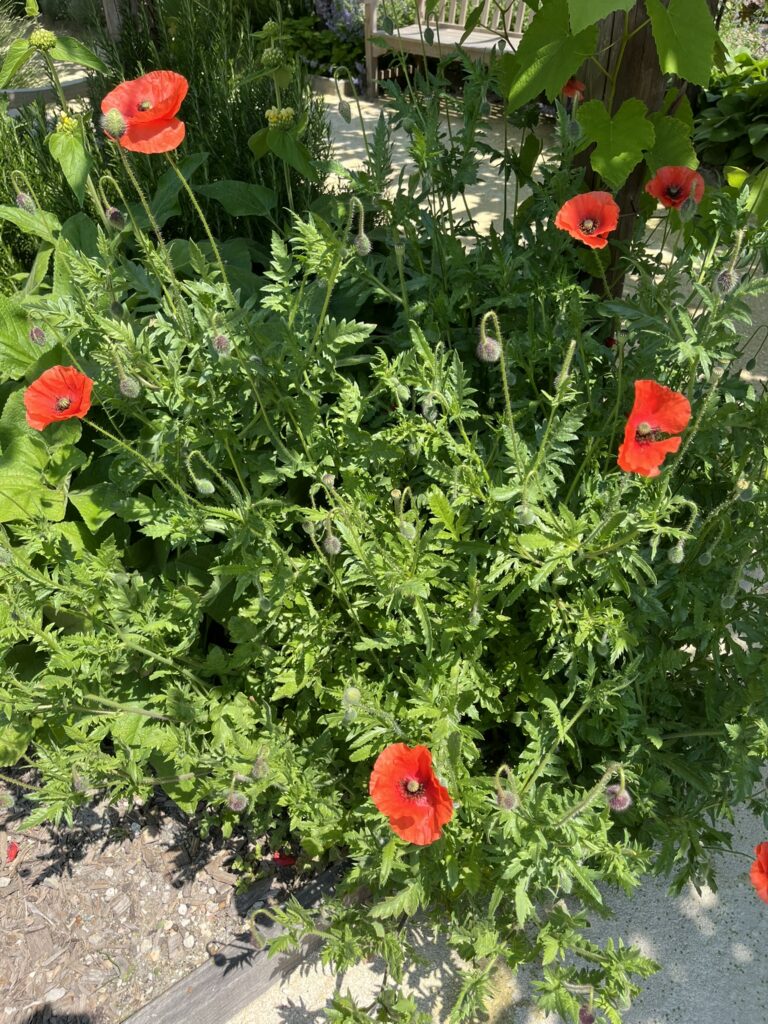
If you would like to keep exploring Giudecca after your visit, have a look at my posts ‘Giudecca: A peaceful island with 10 remarkable buildings’ or ‘A walk from Torcello to Giudecca with Nicoletta’. If you prefer more of Venice’s green spaces, don’t miss ‘Wander through the hidden gardens in Venice’.
I hope you enjoy this peaceful green retreat as much as I did. Let me know what you think if you visit. I would love to hear your impressions!
Have fun!
